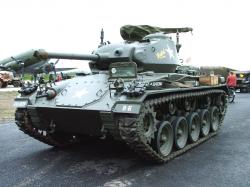Translate this Page
Recent reviews :
- The Men of Wellington's Light Division (Gareth Glover and Robert Burnham)
- Blood, Guts and Gore. (John Gordon Smith )
- Armoured Warfare in the British Army 1939-1945 (Dick Taylor)
- Battle Understanding Conflict Hastings to Helmand (Graeme Callister & Rachael Whitbread)
- Eyewitness at Dieppe (Ross Reyburn)
- Echoes From Dawn Skies - Early Aviators: A Lost Manuscript Rediscovered (Frederick Warren Merriam)
- The Decline of Empires in South Asia (Heather A Campbell)
- The Final Curtain Burma 1941-1945 (Jeremy Archer)
- The Harwich Striking Force (Steve R Dunn)
- Churchill's Arctic Convoys (William Smith)
Review for Battle for Paris 1815
Author/Director : Paul L. Dawson
Format : Book
For anyone seeking a full understanding of the end of the Napoleonic era this book is a must read. Paul Dawson’s tour de force of research, into previously rarely access French sources, really has produced the previously untold story of Grouchy’s withdrawal/retreat from Wavre to Paris. One example is when he writes of a French cavalry charge on the 3rd July 1815 ‘This was the last cavalry charge of the Napoleonic wars. It has been, until the details were teased out from the mass of paper work in the French Army Archives, totally forgotten about.’
Dawson makes clear that he is a firm supporter of Grouchy and criticises the ‘received wisdom’ about him by using lots of first hand evidence. It is refreshing to note that the author also makes clear where he has had to change his own mind as he came across new evidence. There are some pertinent insights, given almost as throw aways, into the minutiae of campaigning such as the lack of good horses for aides carrying dispatches.
The narrative flows in an easily readable style and there are some appropriate illustrations.
All the above is most positive however there at two major negatives, one within the book’s scope the other without. First down side is that a reader of this book needs at least two large maps. One of the area retreated through and another of the city of Paris. Without these much of the information does not have much meaning. A troop movement from A to B is only understood if you know where A and B are.
The other negative, not strictly about this book, probably requires another book to address. This would cover the contemporaneous movements of the Allies. Knowing these would allow some fuller judgements to be made on the appropriateness of Grouchy’s movements.
We thoroughly recommend this book with the caveat that the reader provides their own maps.
Published by : Frontline Books, 2019
ISBN : 978 1 52674 927 7
Review last updated : 2019-12-02 10:21:44






